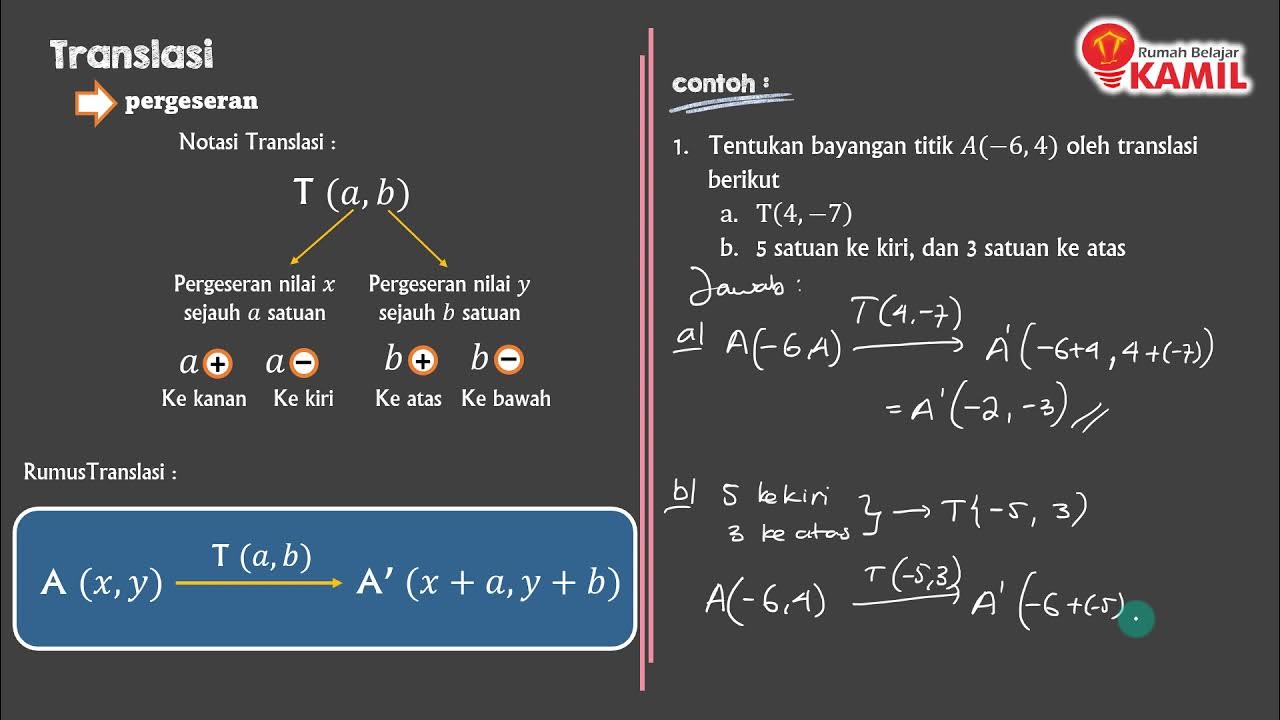IPA Kelas 9 : Sistem Perkembangbiakan Tumbuhan (Part 2 : Bagian Bunga dan Penyerbukan)
Summary
TLDRThis educational video by Kak Kamil focuses on the reproductive processes in plants, specifically in angiosperms. The video begins by explaining the two main types of plant reproduction: vegetative (asexual) and generative (sexual). It then delves into generative reproduction, covering parts of a complete flower such as stamens and pistils, and their roles in fertilization. Various types of pollination, including self, cross, and human-assisted, are detailed, with examples for each. The video highlights the unique characteristics of flowers that attract different pollinators like insects, birds, and bats, making it an informative guide for biology students.
Takeaways
- 🌱 Plants reproduce through two methods: vegetative (asexual) and generative (sexual).
- 🌼 Generative reproduction in plants, especially in angiosperms (flowering plants), involves fertilization between sperm and egg cells.
- 🌸 The reproductive organs of a flower include male (stamen) and female (pistil) parts.
- 🌿 The stamen consists of the anther (produces pollen) and filament, while the pistil consists of the stigma, style, ovary, and ovule.
- 🍃 Pollen from the anther fertilizes the ovule through the process of pollination, which can occur in various ways.
- 🌻 Pollination types include self-pollination (same flower), cross-pollination (different plants), and hybrid pollination (between varieties).
- 🐝 Insect-pollinated flowers often have bright colors, nectar, and sticky pollen to attract insects like bees and butterflies.
- 🦜 Bird-pollinated flowers are usually large, produce lots of nectar, and have trumpet-shaped petals.
- 🌾 Wind-pollinated flowers have long stems and produce small, lightweight pollen that can be easily carried by the wind, like in corn and rice.
- 🌺 Human-assisted pollination is common for plants with economic value, like vanilla and orchids, where humans manually transfer pollen for fertilization.
Q & A
What are the two main types of plant reproduction?
-Plants reproduce in two main ways: vegetative reproduction, which occurs through parts of the plant like leaves, stems, or roots without fertilization, and generative reproduction, which involves fertilization through reproductive organs.
What is vegetative reproduction in plants?
-Vegetative reproduction is the process of a plant reproducing through its body parts such as leaves, stems, or roots without undergoing fertilization or sexual reproduction.
What is generative reproduction in angiosperms?
-Generative reproduction in angiosperms occurs through fertilization, where sperm cells from pollen grains fertilize the egg cells in the ovules, leading to seed development inside fruits.
What are the parts of a complete flower involved in reproduction?
-A complete flower has both male and female reproductive parts: the stamen (male) consisting of the anther and filament, and the pistil (female) consisting of the stigma, style, ovary, and ovules.
What is the role of the stamen in flower reproduction?
-The stamen is the male reproductive part of the flower. It consists of the anther, which produces pollen (containing sperm cells), and the filament, which supports the anther.
What is the function of the pistil in a flower?
-The pistil is the female reproductive part of the flower. It includes the stigma, which receives pollen, the style, which transports pollen to the ovary, and the ovary, which contains ovules that develop into seeds after fertilization.
How does pollination occur in plants?
-Pollination occurs when pollen from the anther (male part) is transferred to the stigma (female part) of a flower. This process can happen through different means such as wind, insects, birds, or even human intervention.
What is self-pollination?
-Self-pollination is when pollen from the anther of a flower lands on the stigma of the same flower, leading to fertilization within the same plant.
What is cross-pollination and how does it differ from self-pollination?
-Cross-pollination occurs when pollen from the anther of one flower is transferred to the stigma of a flower on a different plant of the same species, as opposed to self-pollination which happens within the same flower.
What are the different types of pollination based on pollen transfer?
-Pollination can be categorized into four types: self-pollination (within the same flower), cross-pollination (between flowers on different plants of the same species), neighbor-pollination (between flowers on the same plant), and hybrid pollination (between flowers of different varieties of the same species).
What are some examples of animals that help in pollination?
-Insects like bees and butterflies, birds like hummingbirds, and bats are common examples of animals that assist in pollination. Each is attracted by the nectar, and they transfer pollen while feeding on it.
Outlines

This section is available to paid users only. Please upgrade to access this part.
Upgrade NowMindmap

This section is available to paid users only. Please upgrade to access this part.
Upgrade NowKeywords

This section is available to paid users only. Please upgrade to access this part.
Upgrade NowHighlights

This section is available to paid users only. Please upgrade to access this part.
Upgrade NowTranscripts

This section is available to paid users only. Please upgrade to access this part.
Upgrade NowBrowse More Related Video

Reproduksi pada Tumbuhan (Angiospermae, Gymnospermae, Pteridophyta, dan Bryophyta)

IPA Kelas 9 : Sistem Perkembangbiakan Tumbuhan (Part 3 : Pembuahan Ganda pada Tumbuhan Angiospermae)

Tumbuhan Berbiji Terbuka dan Tertutup || SPERMATOPHYTA || Materi Biologi Kelas 10 || Utak Atik Otak

IPA Kelas 9 : Sistem Perkembangbiakan Tumbuhan (Part 1 : Perkembangbiakan Vegetatif)

Angiospermas, Reino Plantae - plantas com flor (mais grão de pólen, tubo polínico, óvulo e sementes)

Matematika Kelas 9 : Transformasi Geometri (part 1 : Translasi)
5.0 / 5 (0 votes)